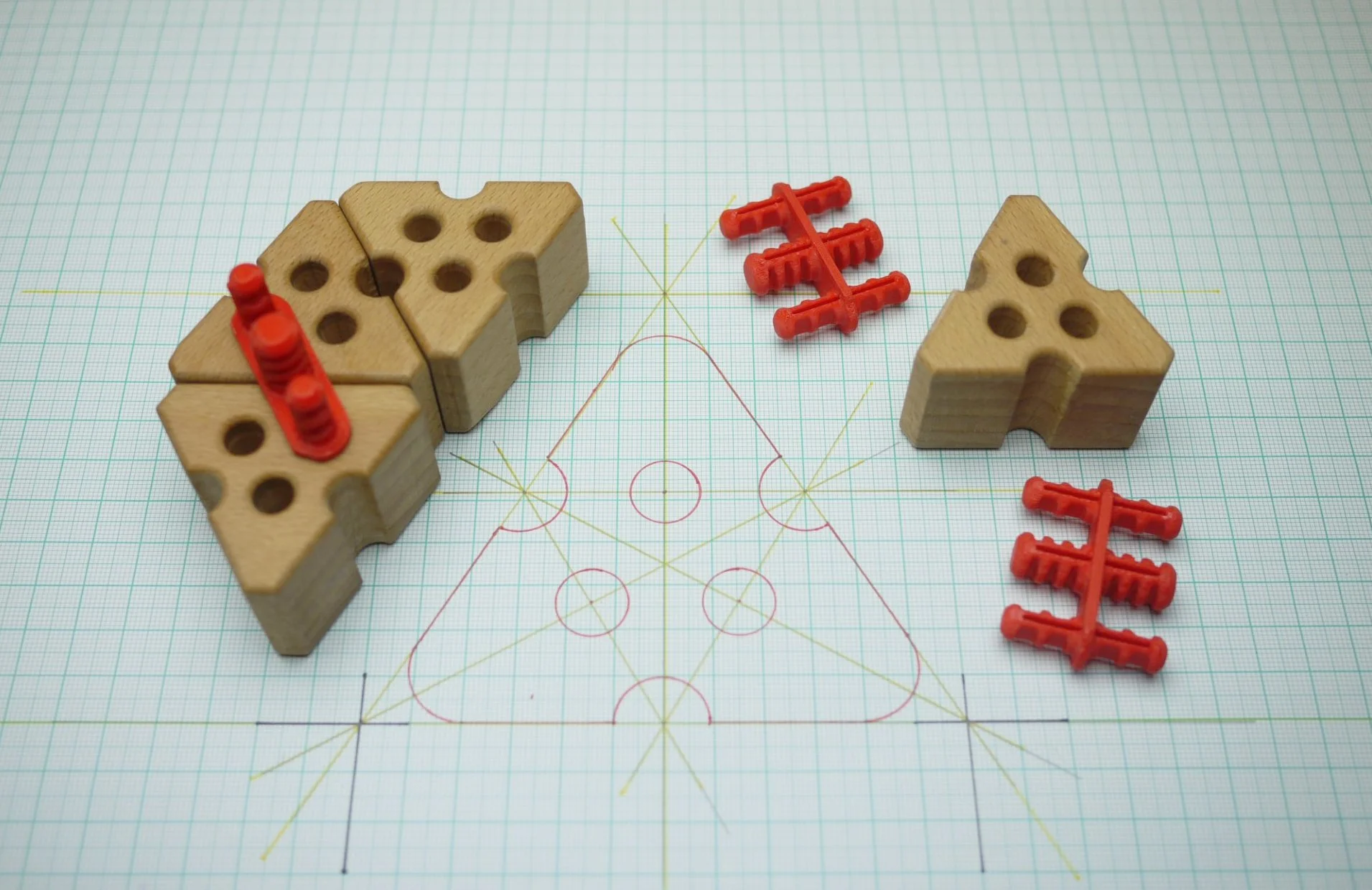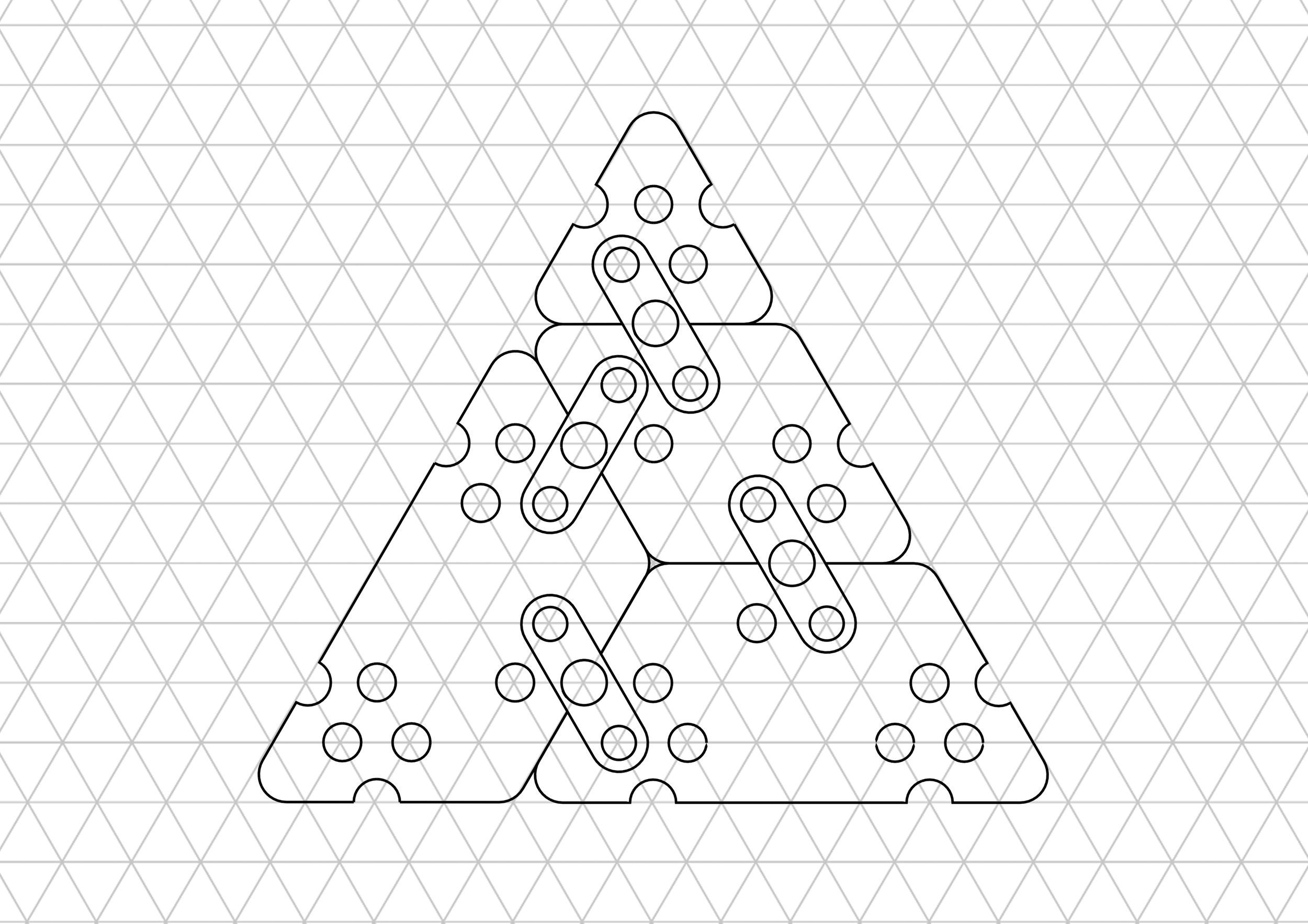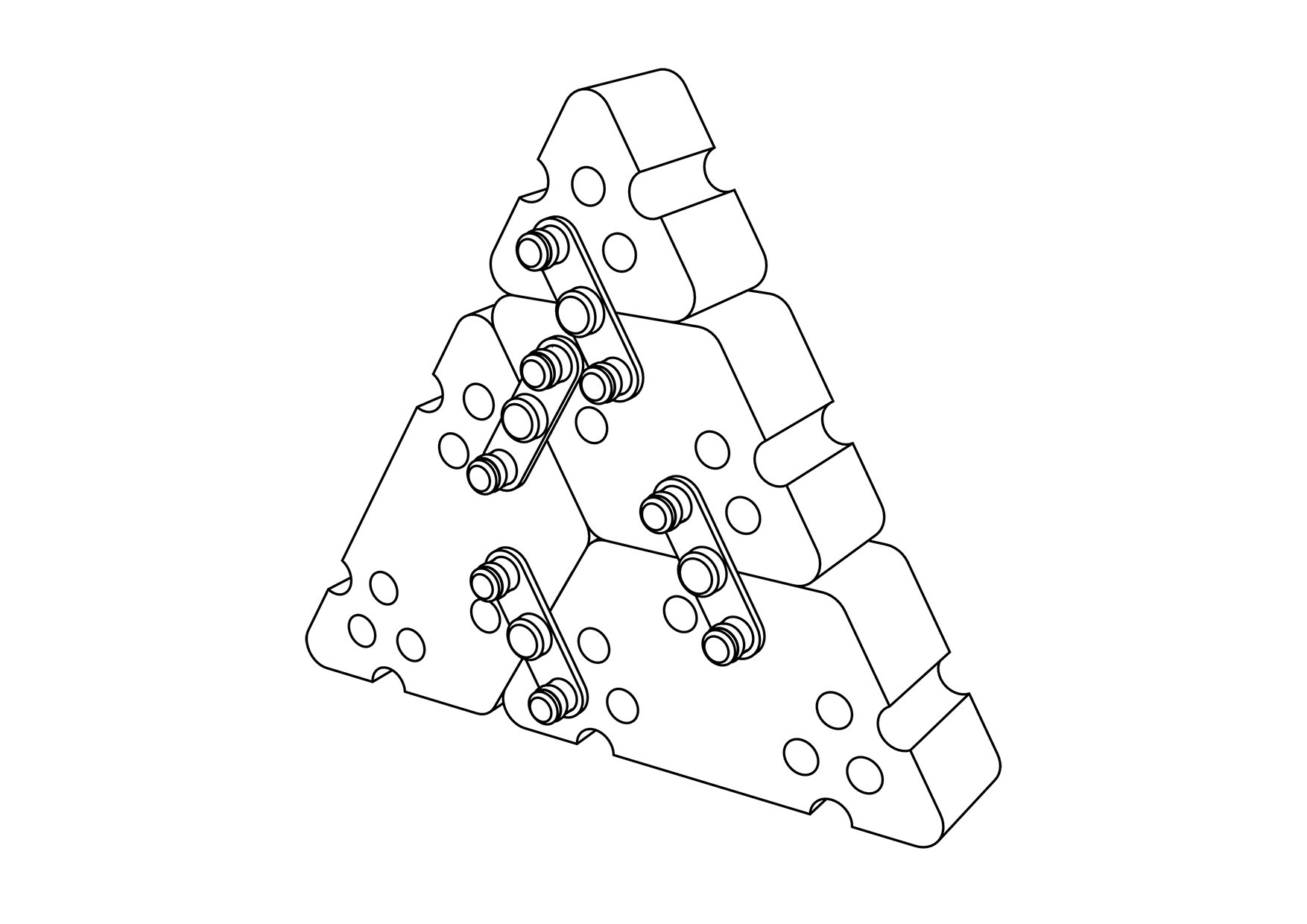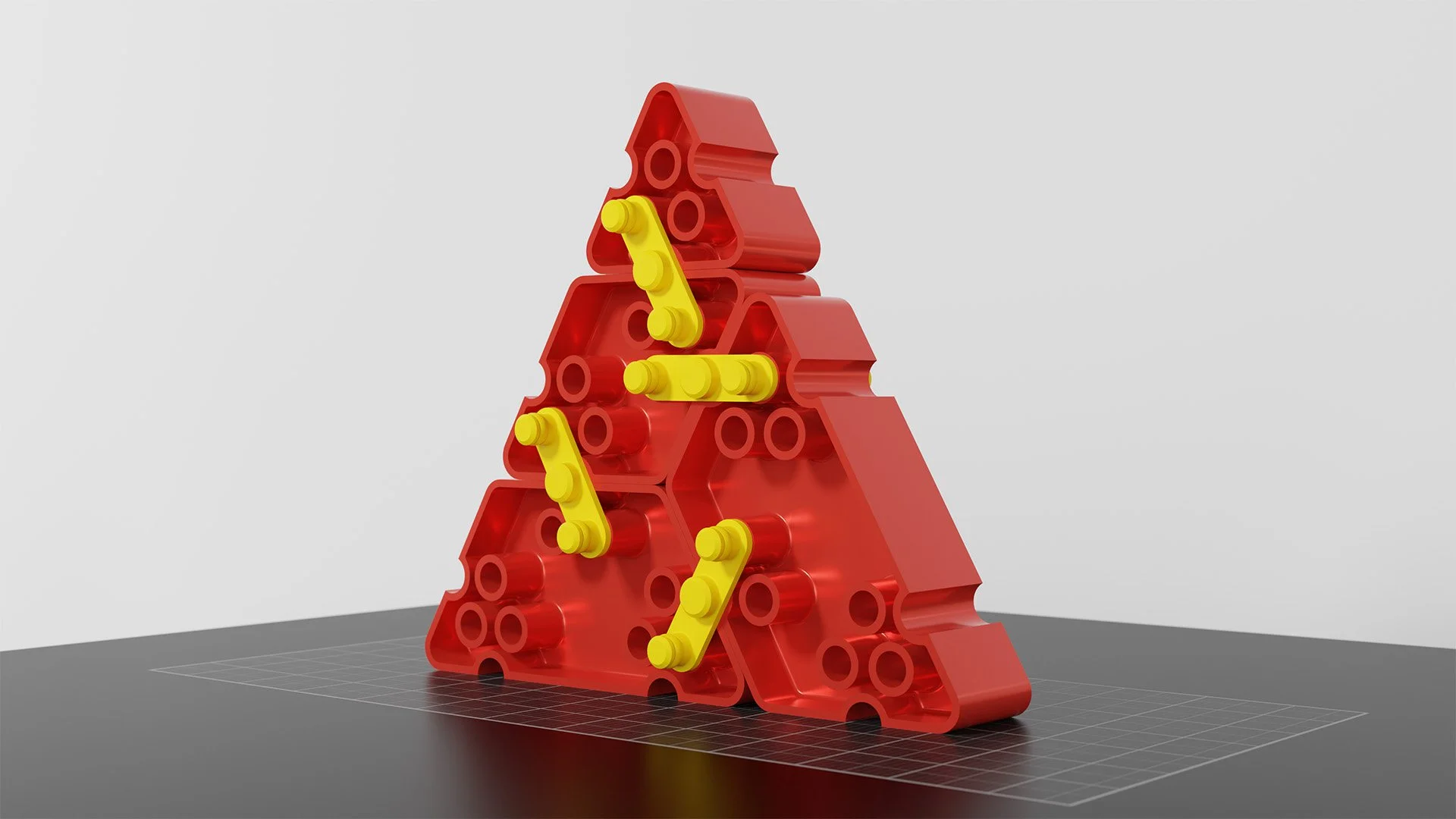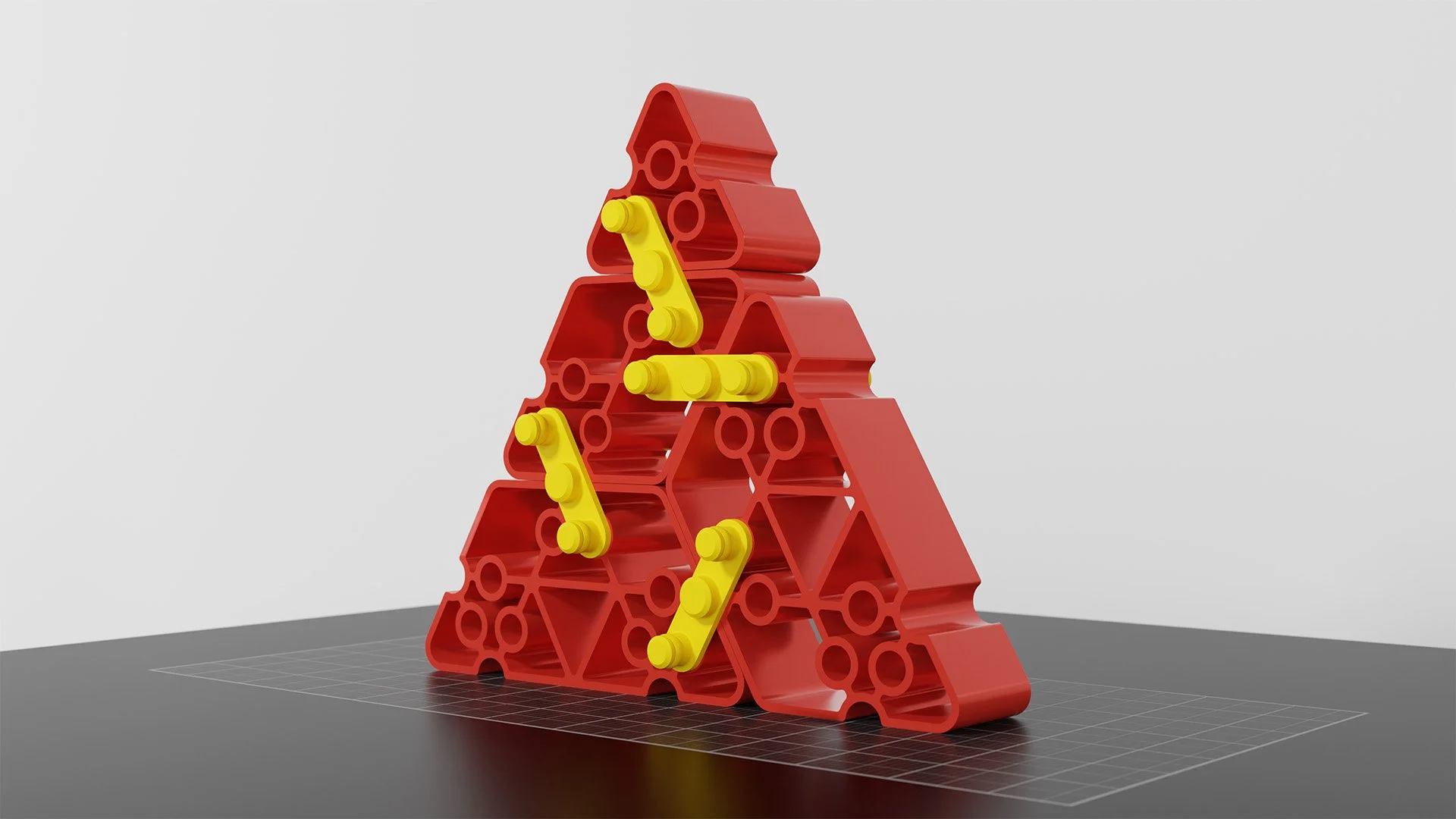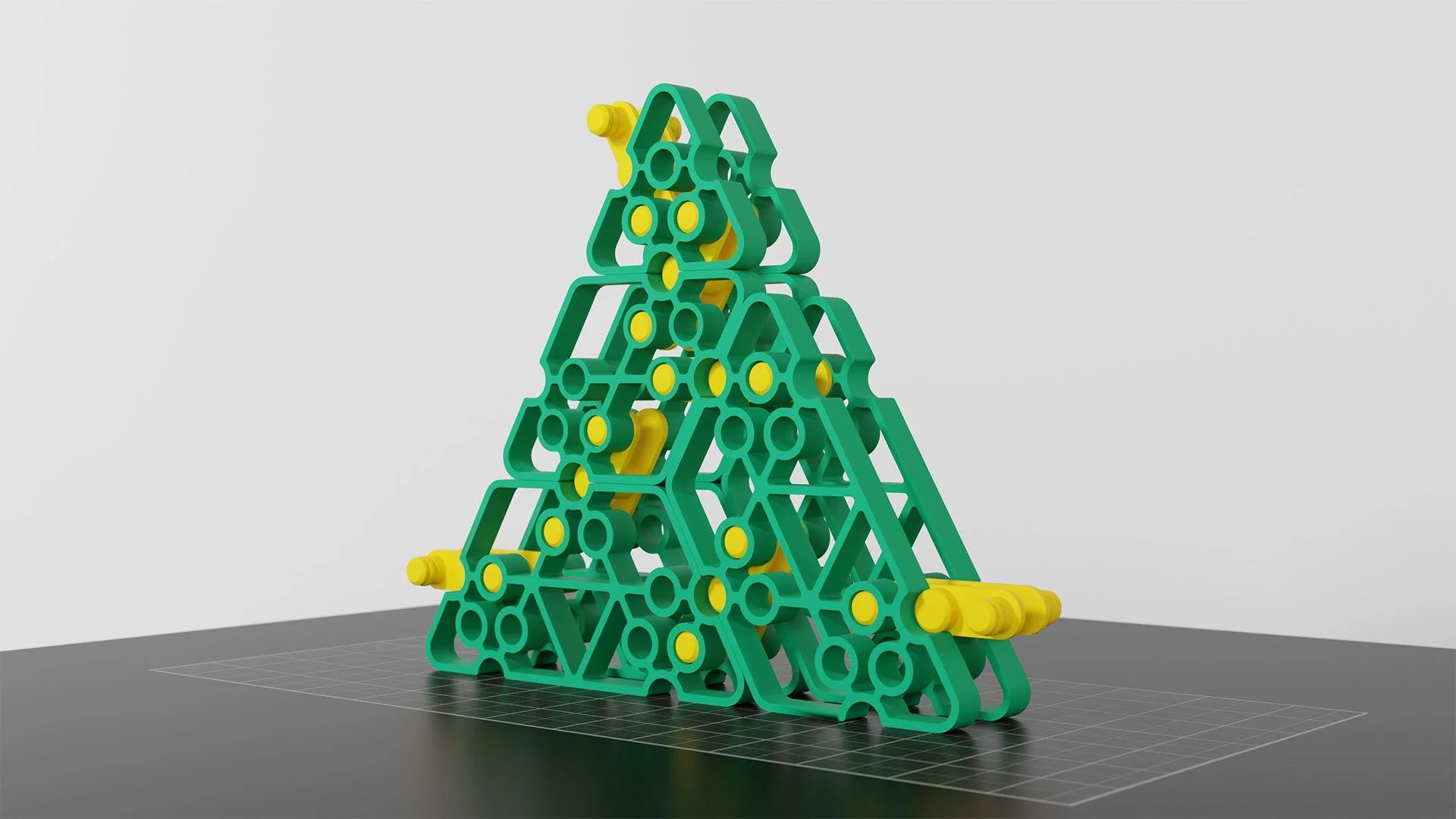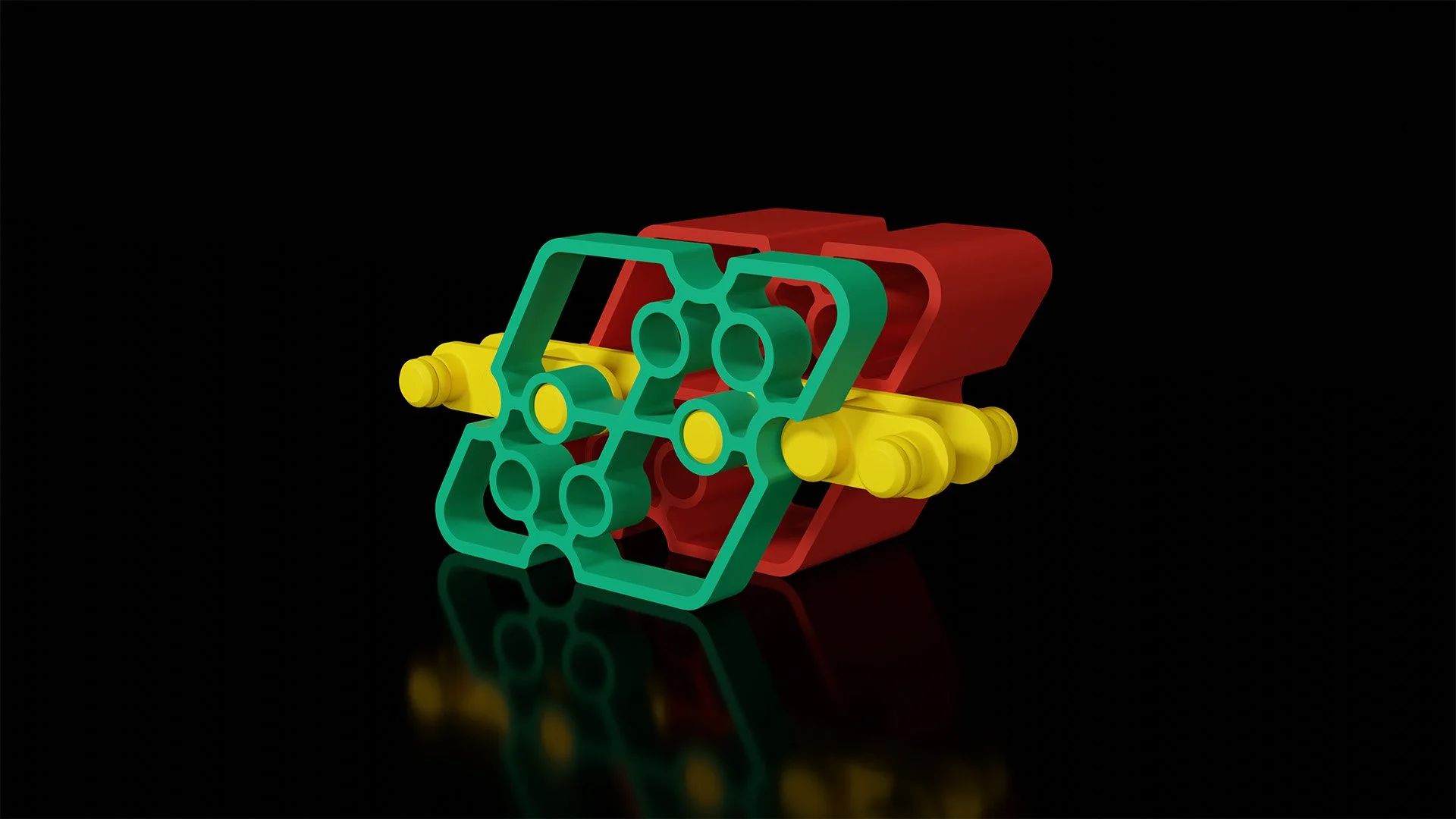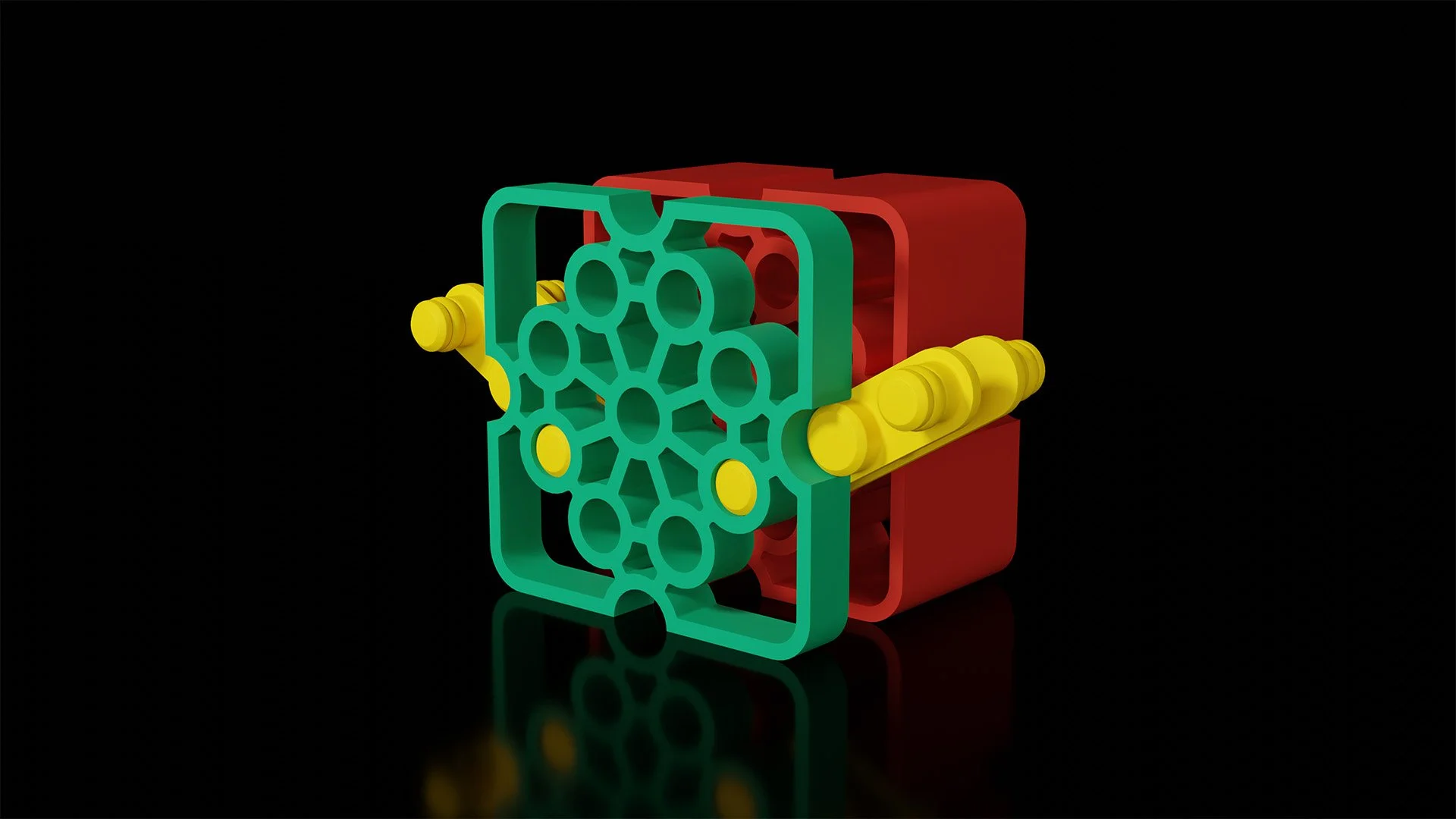The Link-Blocks™ StorY
Link Blocks originated in a small garden workshop in Kingston upon Thames, near London. Richard Hicks, a product design engineer, decided to make his grandchildren a simple wooden building system, each block sawn in the shape of a trapezium (trapezoid in the US).
The first designs were held together with tubes and elastic bands. Richard realised that the single block shape provided limited scope for creativity and play so he added three further block shapes - a rhombus, an equilateral triangle and a square.
But how to join the blocks together?
the design concept
The isometric grid illustrates how the problem was solved with a single connector. Despite the simplicity of the design two blocks can be joined in up to 52 different ways providing unlimited scope for a child’s imagination and creativity.
The isometric grid defines the hole centres, each hole is spaced the same distance apart, all blocks can be joined with a single connector. Link Blocks are based on a 60mm equilateral triangle and a 30mm module to ensure compatibility with other wooden building blocks.
The concept is infinitely scalable from a toy construction to a civil engineering project. Link Blocks can be built in tension and compression making it a valuable STEM teaching tool for the construction of beams, cantilevers, bridges, cranes and pulley systems.
Link Blocks can be injection moulded, however, the design provides an opportunity to exploit extrusion and low volume wood and bamboo production. Extrusion in aluminium is a valuable feature of the block design due to the metal’s infinite recyclability and availability.
Link-blocks™ Methods of Manufacture
IMAGINATION, INGINUITY AND CREATIVITY
The four link block shapes enable a child to build a limitless number of constructions. Instructions are rarely required, just imagination, ingenuity and creativity. There is scope for extra parts such as wheels, pulleys and axles.
All the blocks can be utilised in simple or elaborate of constructions. None of the blocks become redundant or “forgotten”.
Link Blocks IP: patent pending, registered design and registered trademark


